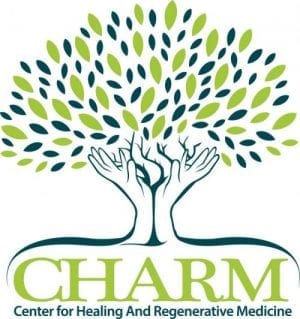If ongoing joint pain, tendon issues, or a slow-healing injury sounds familiar, you may wonder whether there’s a better solution than medications or surgery. Fortunately, platelet-rich plasma (PRP) therapy offers a promising minimally invasive alternative. This regenerative medicine therapy uses your body’s own natural healing properties to reduce pain, improve function, and support tissue repair.
But who benefits the most from PRP? Understanding how PRP works, what it can treat, and what it means to be a good PRP therapy candidate can help you decide if it’s the right non-surgical pain relief option.
What Is PRP Therapy for Chronic Pain?
Blood comprises four components: red blood cells, white blood cells, plasma, and platelets. PRP therapy involves drawing a small amount of your blood and then processing it in a lab to draw out the platelets. Then, your platelets are mixed with a plasma-rich liquid base and injected into the area causing your discomfort. Platelets play an essential role in stimulating healing and cell growth, and when they’re injected directly, they can speed up tissue repair in injured or damaged areas.
This technique is often used by professional athletes’ orthopedic or sports medicine specialists. However, it’s also becoming popular among patients of any age due to its minimally invasive nature and ability to stimulate the body’s natural repair process.
Benefits of Platelet-Rich Plasma Therapy
PRP therapy has become one of the most advanced regenerative medicine options available because of its versatility and long-term efficacy. The benefits of PRP include:
- Minimally invasive and performed in-office
- Utilizes your own blood without any synthetic substances
- Promotes natural tissue healing and tissue regeneration
- May reduce or eliminate the need for surgery
- Low risk of allergic reaction or side effects
- Little to no downtime after the procedure
What Conditions Can PRP Therapy Treat?
PRP studies show that PRP therapy can treat various orthopedic, musculoskeletal, and soft tissue conditions. It particularly benefits conditions or injuries that haven’t responded to traditional non-surgical treatments, like physical therapy, anti-inflammatory medications, or corticosteroid injections.
Some conditions commonly treated with PRP therapy include:
- Chronic tendonitis, such as tennis elbow and Achilles tendonitis
- Ligament injuries
- Muscle strains or tears
- Mild to moderate osteoarthritis
- Plantar fasciitis
- Rotator cuff injuries
- Joint pain in the shoulder, hip, knee, or spine
- Post-surgical tissue repair support
If you’re exploring options for PRP injection therapy in Austin, it’s essential to meet with a provider who understands your unique diagnosis and recovery goals.
Who Are Ideal PRP Therapy Candidates?
Some factors might make you a better candidate for PRP than others. For example, you may be a good PRP therapy candidate if you:
- Have joint pain or a soft tissue injury that hasn’t improved with other treatments
- Are seeking a non-surgical alternative for chronic orthopedic issues
- Want to avoid long-term use of steroids or pain medications
- Are generally in good health with no major blood disorders
- Are looking for a natural solution that uses your body’s own healing abilities
PRP is often recommended for adults with mild to moderate symptoms who are hoping to delay or avoid surgery while still actively managing pain and improving mobility.
Who May Not Be a Good Fit for PRP Therapy?
While PRP is a low-risk treatment, it may not suit everyone. For example, you may not be a good candidate for PRP therapy if you:
- Have a bleeding disorder or take anticoagulant medications that can’t be paused
- Are currently undergoing cancer treatment or chemotherapy
- Have ongoing infections or skin conditions near the injection site
- Are pregnant or breastfeeding
- Have severe degenerative joint disease that may require surgical intervention
- Have an autoimmune condition that affects the healing response
Before your injection, your provider will carefully review your medical history to determine if PRP therapy is right for you.
Discuss with a PRP Therapy Specialist in Austin
Pain doesn’t have to be permanent. The Center for Healing and Regenerative Medicine specializes in PRP therapy for joint injuries, tendon issues, and chronic pain. Our team will assess your condition and medical history and help determine if regenerative medicine therapy like PRP is the best approach for your needs.
If you’re considering PRP for knee pain, shoulder pain, tendonitis, or another lingering injury, don’t hesitate to see a regenerative medicine specialist. As one of Austin’s most trusted PRP injection clinics, we’re here to help you explore safe and effective non-surgical pain relief options using the latest regenerative medicine therapies.
Contact The Center for Healing and Regenerative Medicine today to schedule your consultation and start your path toward healing.

